Actinomycosis or Lumpy jaw is a chronic infectious disease of cattle characterized by rarefying osteomyelitis of the head bones, particularly mandible and maxilla, and occasionally involvement of the soft tissues. Horse, swine, and occasionally sheep, goats, and humans may be affected by this disease. The disease is sporadically seen in cattle above the age of 4 years. The disease incidence is more where the cattle are fed with coarse straw and fodder. The coarse fodder and straw injure the buccal mucosa that predisposes the animal for infection.
Important Information on Lumpy Jaw in Cattle
A lumpy jaw or Bovine Actinobacillosis is a common bacterial disease in cattle, sheep, goats, pigs, and horses. The disease is caused by Gram-negative, rod-shaped bacteria, Actinomyces bovis. The disease causes fistula in withers and poll evil. The disease causes substantial economic loss on a cattle farm. The article will help you better manage the disease and prevent the entry of the organism into your farm.
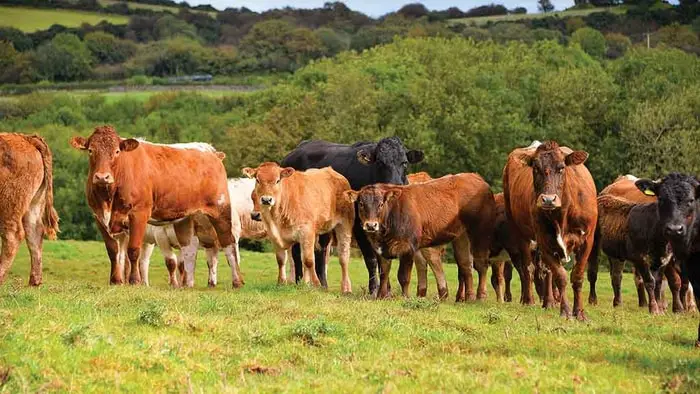
What Causes Lump Jaw in Cows?
The disease is caused by Actinomyces bovis, a gram-positive, pleomorphic rod-shaped bacteria appearing as filamentous that indeed exhibit branching. The bacteria are also anaerobic and non-acid fast. The organism may generally present in the oral cavity of healthy animals. However, A. bovis also present in the soil, pasture, and farm premice. The organism invades the wounded mucous membrane due to any mechanical wound.
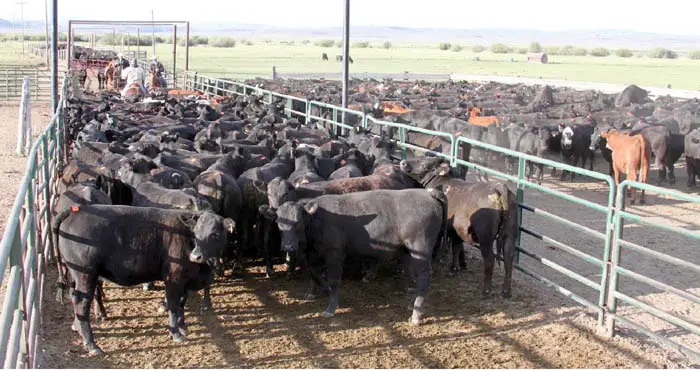
Pathogenesis of Actinomycosis in Cattle
The pathogenesis is very simple, and it can be summarized as below:
- Organisms are normal inhabitants of the oral cavity and gain entrance through abrasion or penetrating the oral mucosal surface wounds.
- It can also enter through the injured mucosa of the alimentary tract.
- There is the involvement of jawbones, which undergo rarefying osteomyelitis.
- Sometimes these organisms involve various organs, including the liver, or rumen resulting in ruminitis and indigestion.
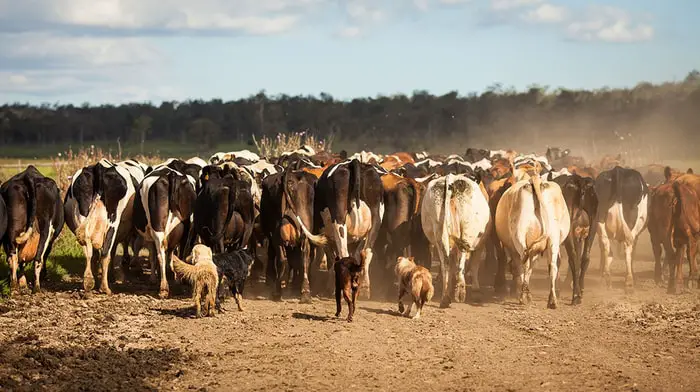
Clinical Signs and Symptoms of Lumpy Jaw in cattle
The organism localized in the bone tissues and start causing permanent hard swelling. The most common clinical signs are:
- Painless, bony swelling appears on the mandible or maxilla, usually at the level of central molar teeth.
- Swellings are very hard and, in later stages, painful to touch.
- The swelling usually breaks through the skin and oozes thick, mucoid, yellow, purulent discharge having granules.
- These granules are yellow and referred to as “sulfur granules.”
- In soft tissue involvement, the oesophageal groove region is affected, resulting in impaired digestion and chronic bloat.
- Sometimes the organism causes the inflammation of bull testis, obstruction of the respiratory tract, and abscess in the brain and lung.
- In the horse, the organism causes ‘fistula weather’ or ‘poll evil.’

Pathological Lesions of Actinomycosis in Cattle
Pathological lesions will help you diagnose the disease quickly. The standard and significant pathological lesions are:
- There is rarefaction of the bone and loculi and sinuses containing thin whey-like pus with small gritty granules.
- The suppurative osteomyelitis of the mandible, referred to as “Lumpy Jaw,” is commonly seen and is characteristic of the disease.
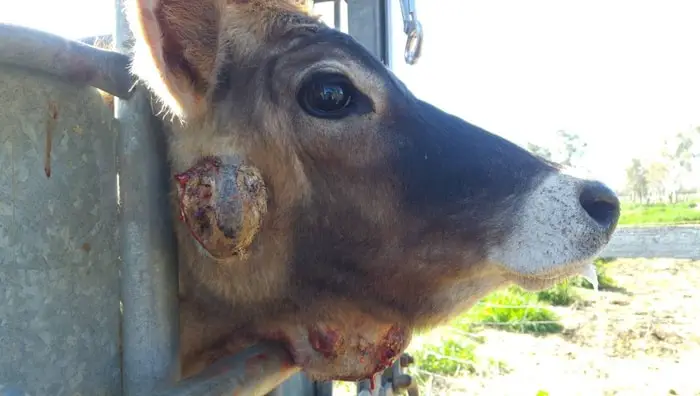
Diagnosis of Actinomycosis in Cattle
The diagnosis of Actinomycosis is complicated as it creates much confusion with other diseases. The routine diagnostic procedures are:
- History of feeding coarse fodder and straw in cattle.
- From clinical signs and symptoms.
- Actinomycosis involves bone tissue and is hard and fibrous.
- Sulfur-like granules reveal pleomorphic gram-positive club-shaped rods and filamentous radiating rays from the center of the granules upon Gram staining.
- These are referred to as ‘Club colonies’ and are the main diagnostic characteristic.
- Routine culture for A bovis from granules or infected tissues.
- Serological tests like Agar Gel Precipitation Test (AGPT) and the Fluorescent Antibody test (FAT) are helpful in their confirmation.
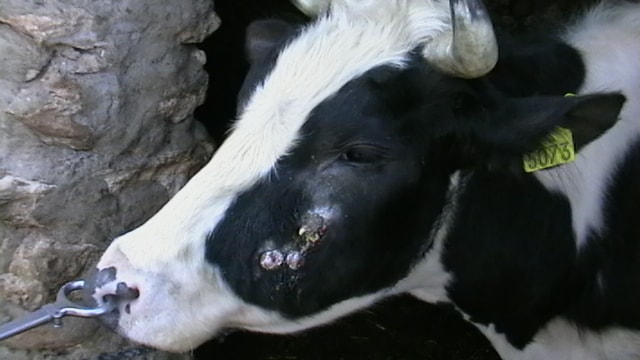
Differential Diagnosis of Lumpy Jaw in cattle
The disease must be differentiated from the following diseases:
- Actinobacillosis is caused by Actinobacillus lignieresii that mainly affects the soft tissues like the tongue. The disease is also known as “Wooden Tongue.”
- Localized abscess of the mandibular region.
- Tuberculosis caused by Mycobacterium tuberculosis and involves multiple organs and systems.
- Nocardiasis.
- Indigestion from chronic peritonitis may resemble the disease caused by visceral Actinomycosis.
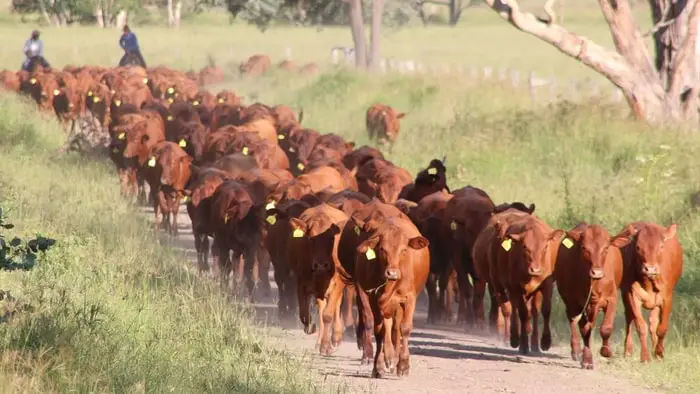
How Do You Treat a Lumpy Jaw in Cattle?
The treatment and management procedures of Lumpy jaw are:
- Opening and drainage of the abscess.
- Packing of the wound with iodine-soaked gauze.
- Antibiotics; ampicillin, penicillin, Amoxycillin, or Tetracycline may be given by calculating doses.
- You can give sodium iodite solution intravenously to get a better result and quick recovery.
- You can give Potacium Iodite solution orally to kill the organism in the buccal cavity, rumen, and alimentary tract.

Prevention Control of the disease
The disease is curable by treatment and proper management. You can prevent the entry of Actimomycosis is your farm by taking the following measures:
- Prompt treatment of the affected animal.
- Isolation of affected animals to prevent contamination of pasture, barn, feed, and cattle farm utensils.
- The animal should be supplied with a soft and palatable diet to protect them from oral injuries.
- You should not be fed coarse fodder and hard straw to your animals that may lead to injury to the oral cavity.
Final Talk on Lumpy Jaw in Cattle
Actinobacillosis is a common bacterial disease in cattle and other domestic animals. The causal agent Actinomyces bovis usually presents the soil, oral cavity of a healthy animal, pasture, and farm premice. The organism enters the circulation by mechanical wounds in the oral cavity. The disease can be diagnosed by the history of the wound and clinical signs. The disease can be cured by proper treatment and management.